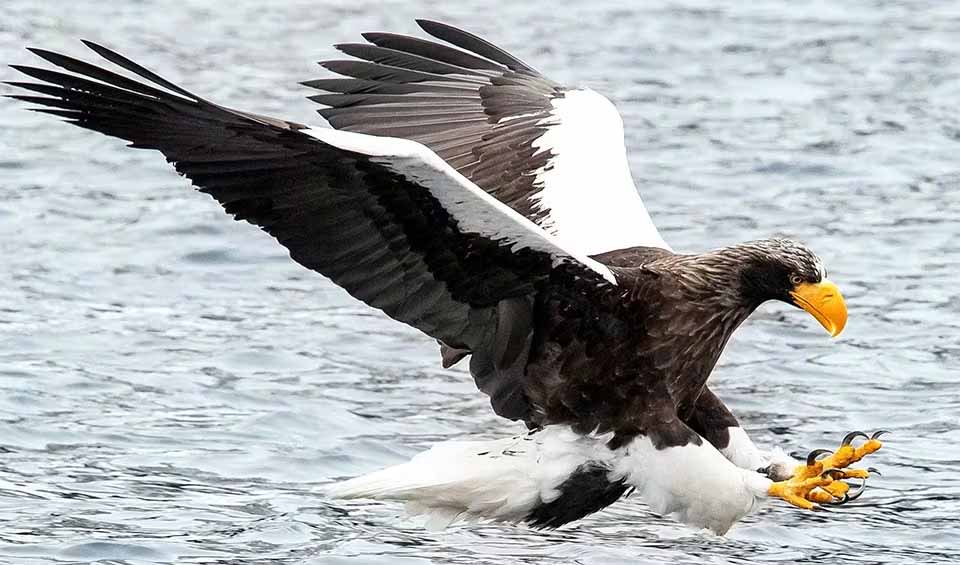One of the most impressive and powerful birds of prey in the world. This eagle is found mainly in coastal areas of northeastern Asia, particularly in Russia and Japan. Its size alone makes it stand out, but it also has striking features that make it easy to recognize. Steller’s sea eagle has dark brown or blackish feathers covering most of its body, with bright white patches on its shoulders, legs, and tail. Its large, yellow beak and fierce, yellow eyes add to its commanding appearance.
One of the most interesting things about Steller’s sea eagle is its diet. As the name suggests, it primarily feeds on fish, with salmon being a favorite. These eagles are excellent hunters, using their sharp eyesight to spot fish from high up in the air. Once they find a target, they swoop down with incredible speed and precision, snatching the fish from the water with their powerful talons. They are also known to eat water birds, small mammals, and carrion, which is the remains of dead animals. In winter, when food can be scarce, Steller’s sea eagles may gather in large groups near open water or on riverbanks where fish are more accessible.
Steller’s sea eagles are solitary birds, except during the breeding season, when they form pairs. They are monogamous, meaning they stay with the same mate for life. The pair works together to build a large nest, often on a cliff or tall tree near water. The nest is made from sticks and lined with softer materials like moss or grass. Each year, the female lays one or two eggs, which both parents take turns incubating. After about six weeks, the chicks hatch, and the parents continue to care for them until they are ready to fly, which takes about two to three months.
Distribution
 China
China Japan
Japan Korea
Korea North Korea
North Korea Russia
Russia Taiwan
Taiwan United States
United StatesAnything we've missed?
Help us improve this page by suggesting edits. Glory never dies!
Suggest an editGet to know me
Terrestrial / Aquatic
Altricial / Precocial
Polygamous / Monogamous
Dimorphic (size) / Monomorphic
Active: Diurnal / Nocturnal
Social behavior: Solitary / Pack / Herd
Diet: Carnivore / Herbivore / Omnivore / Piscivorous / Insectivore
Migratory: Yes / No
Domesticated: Yes / No
Dangerous: Yes / No




